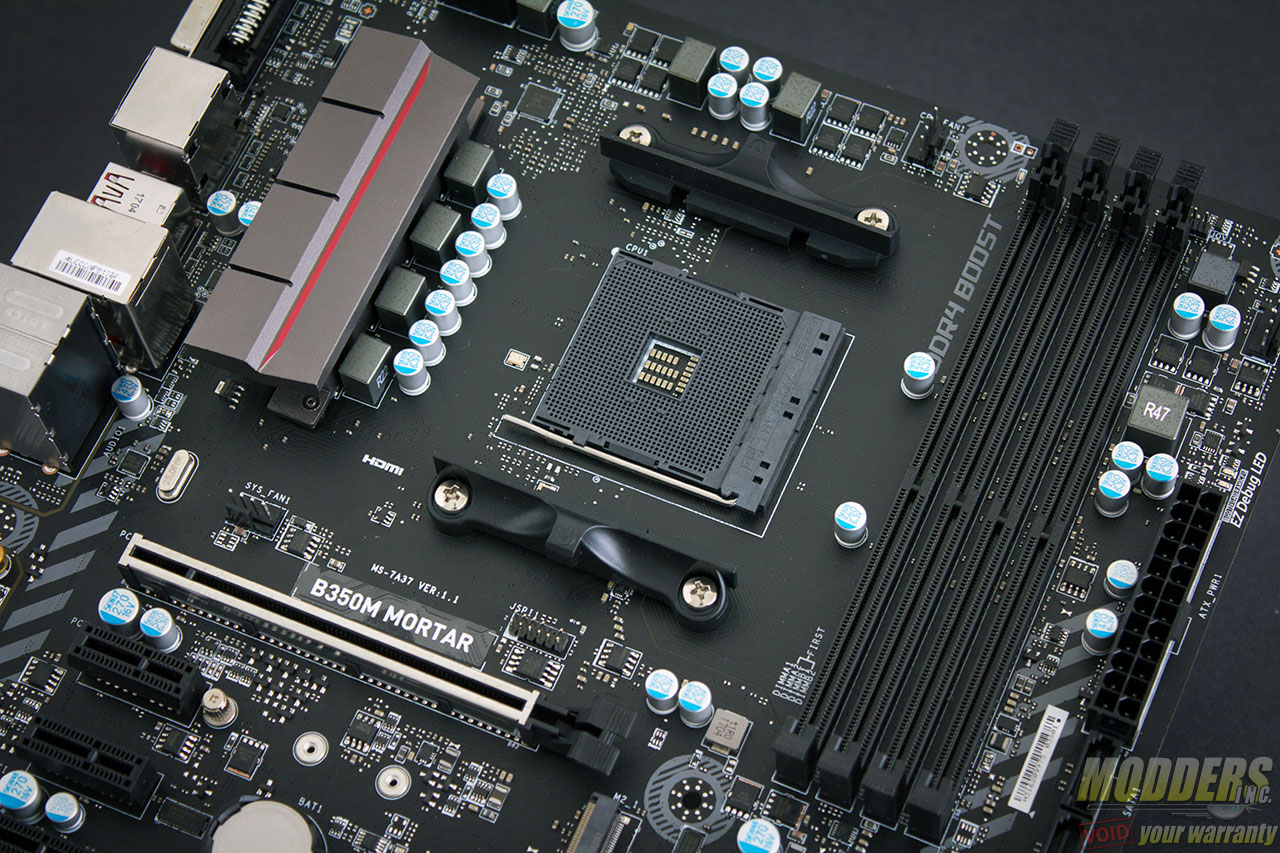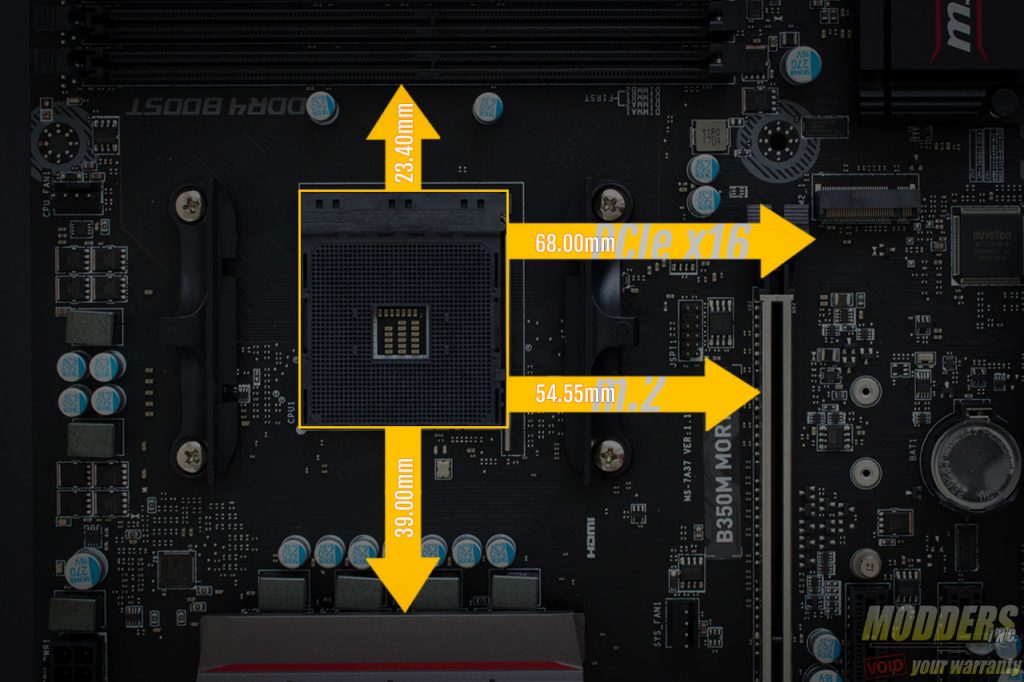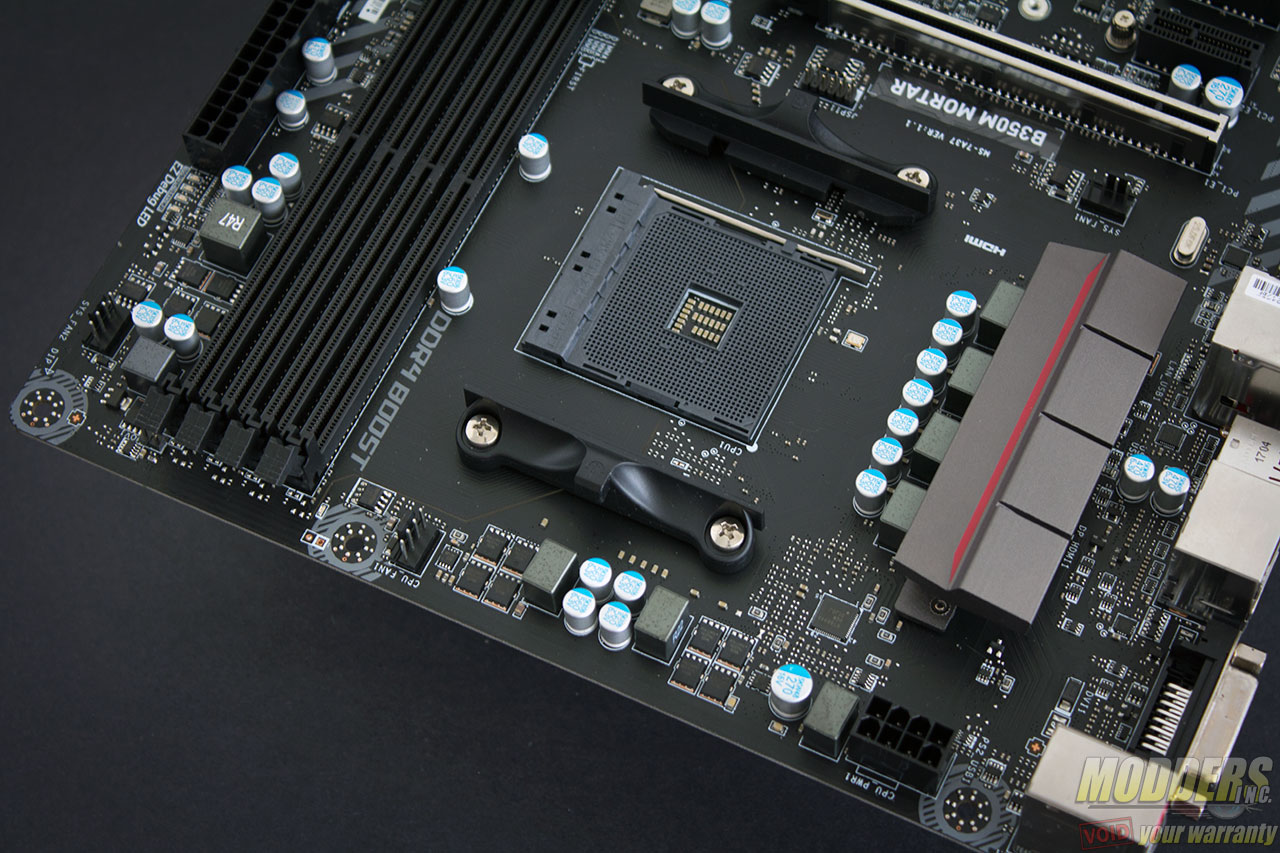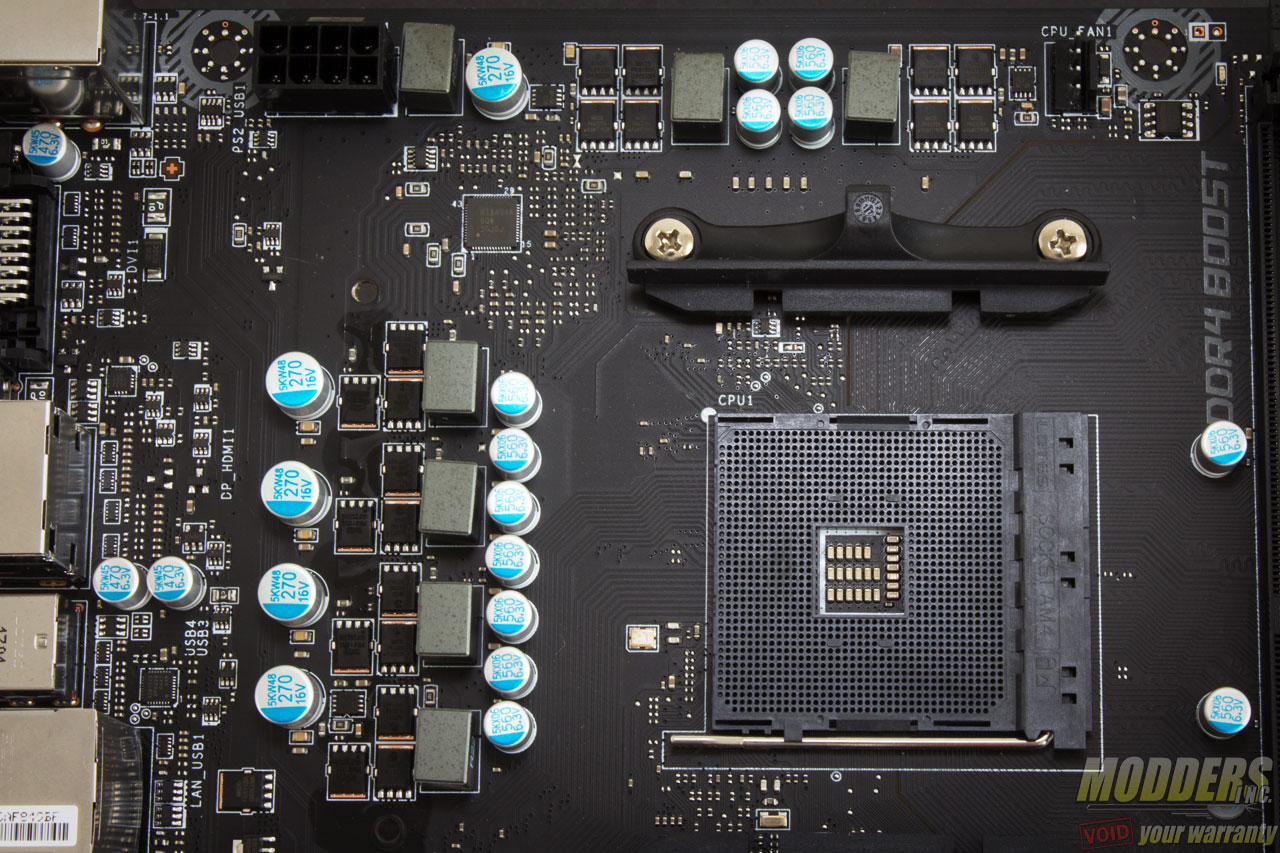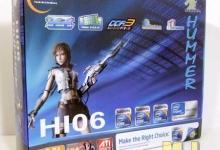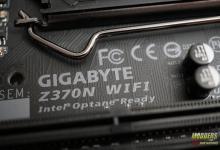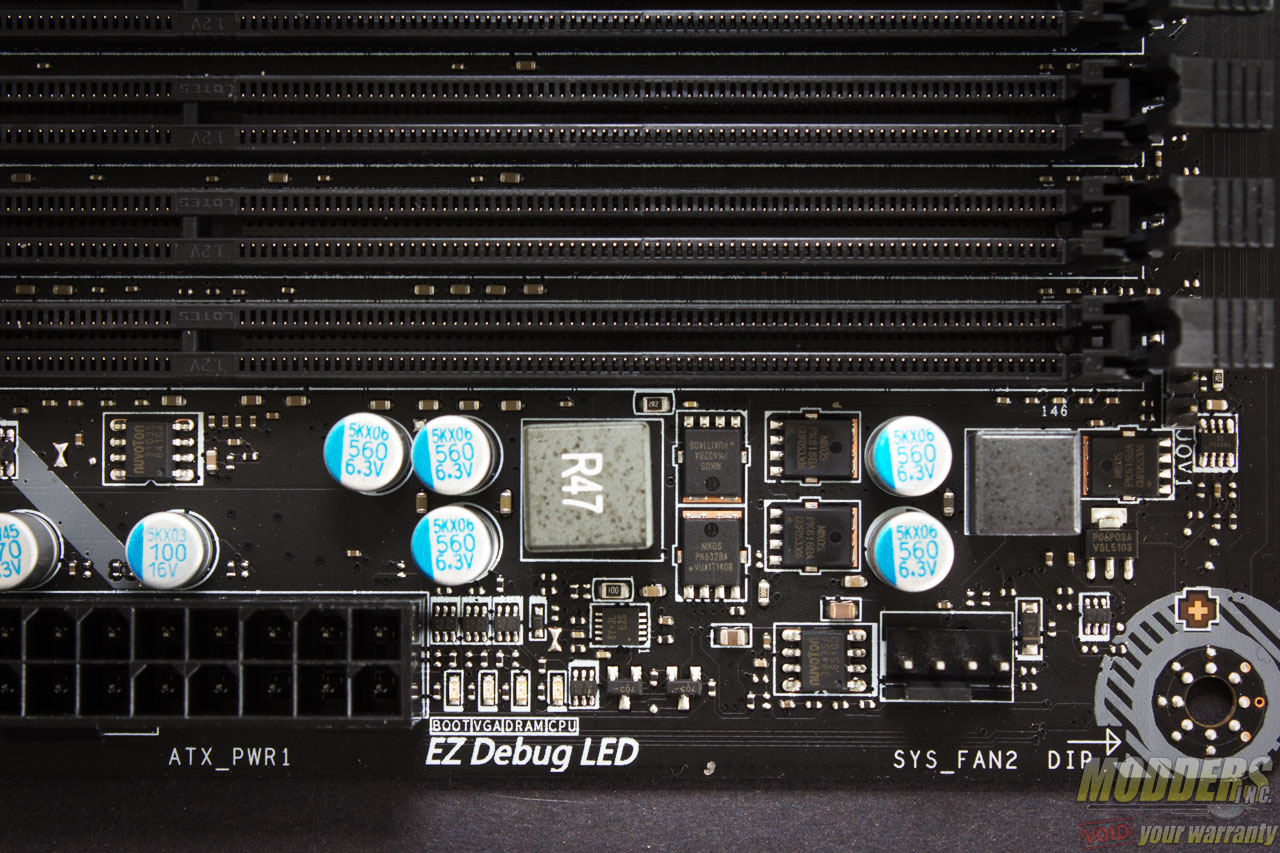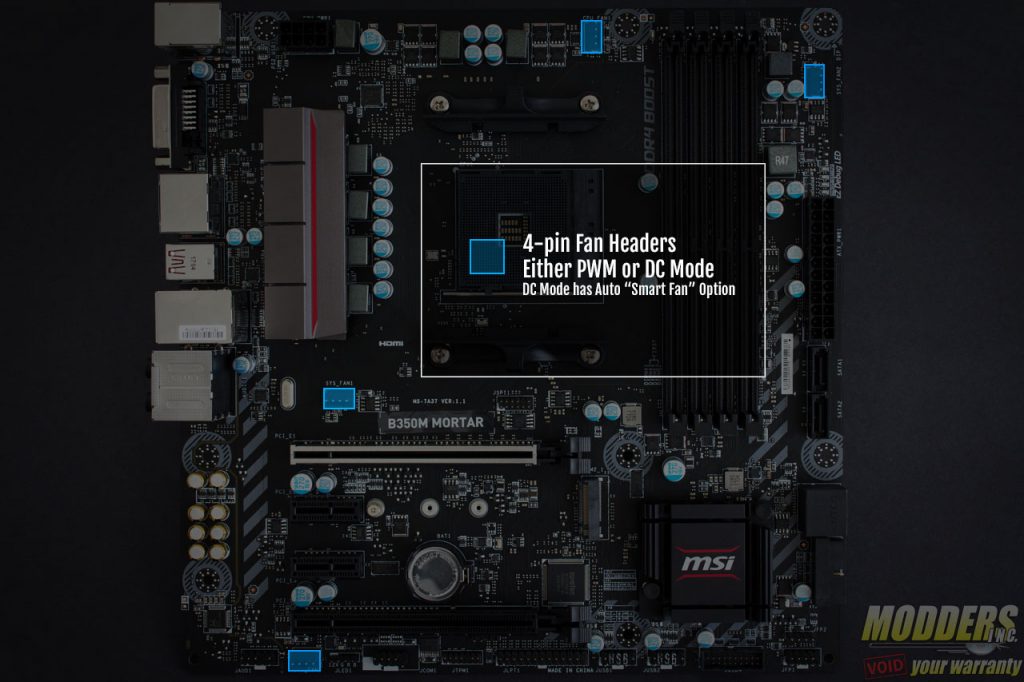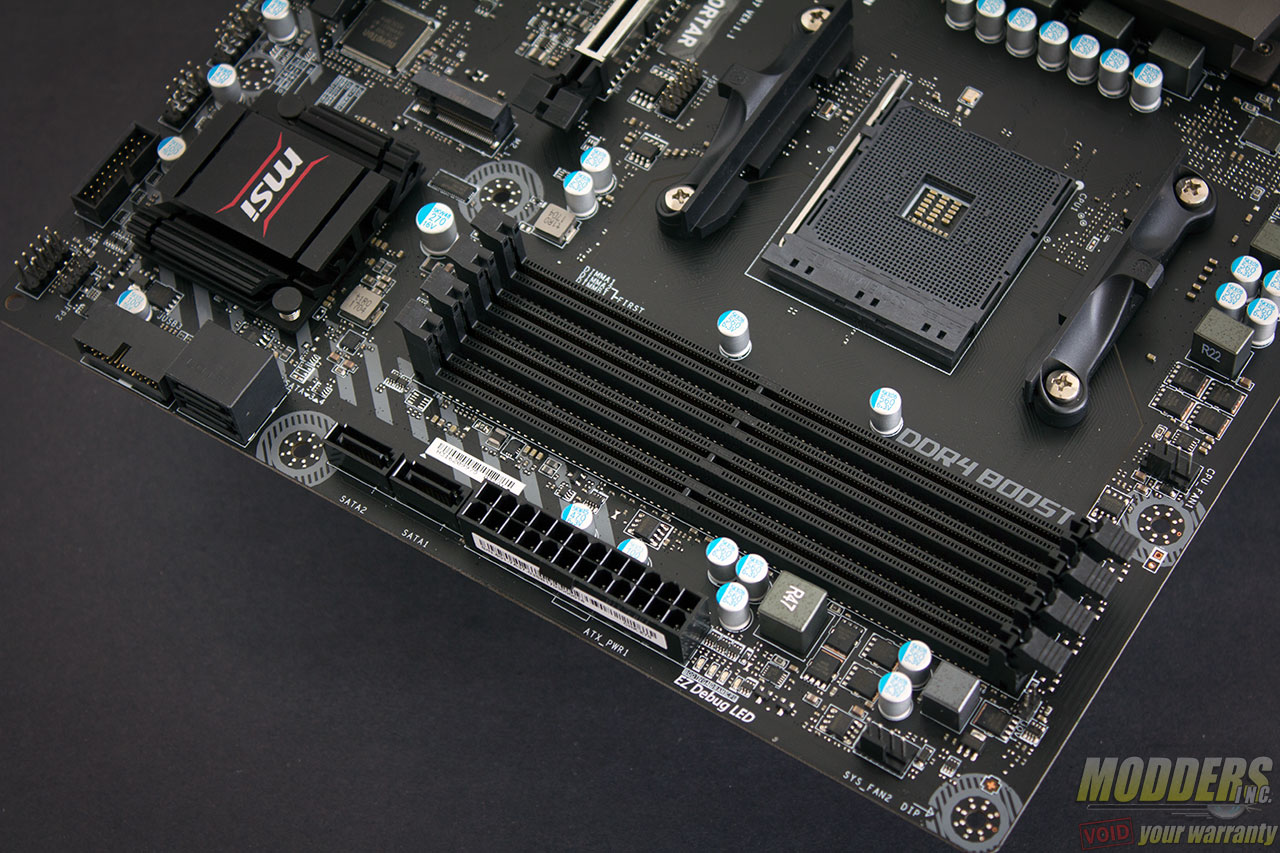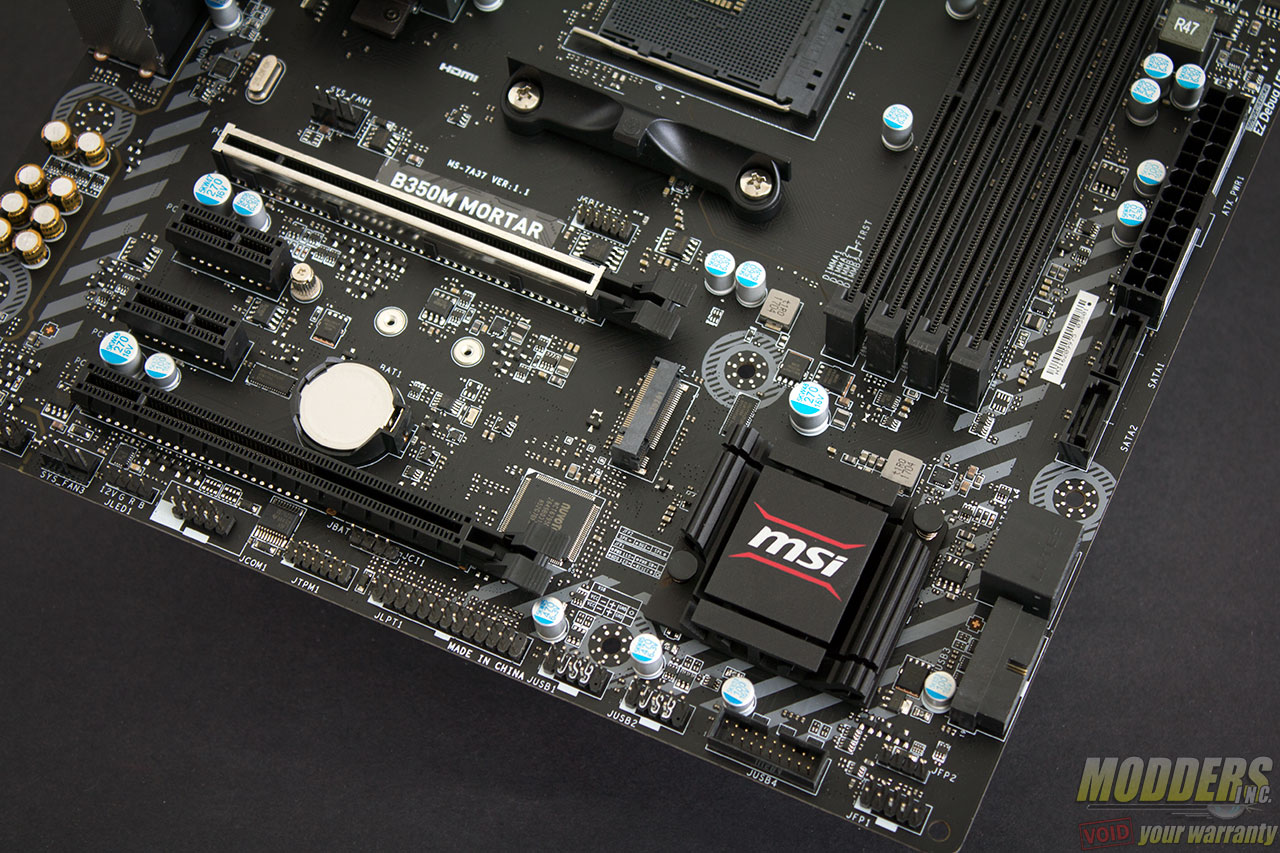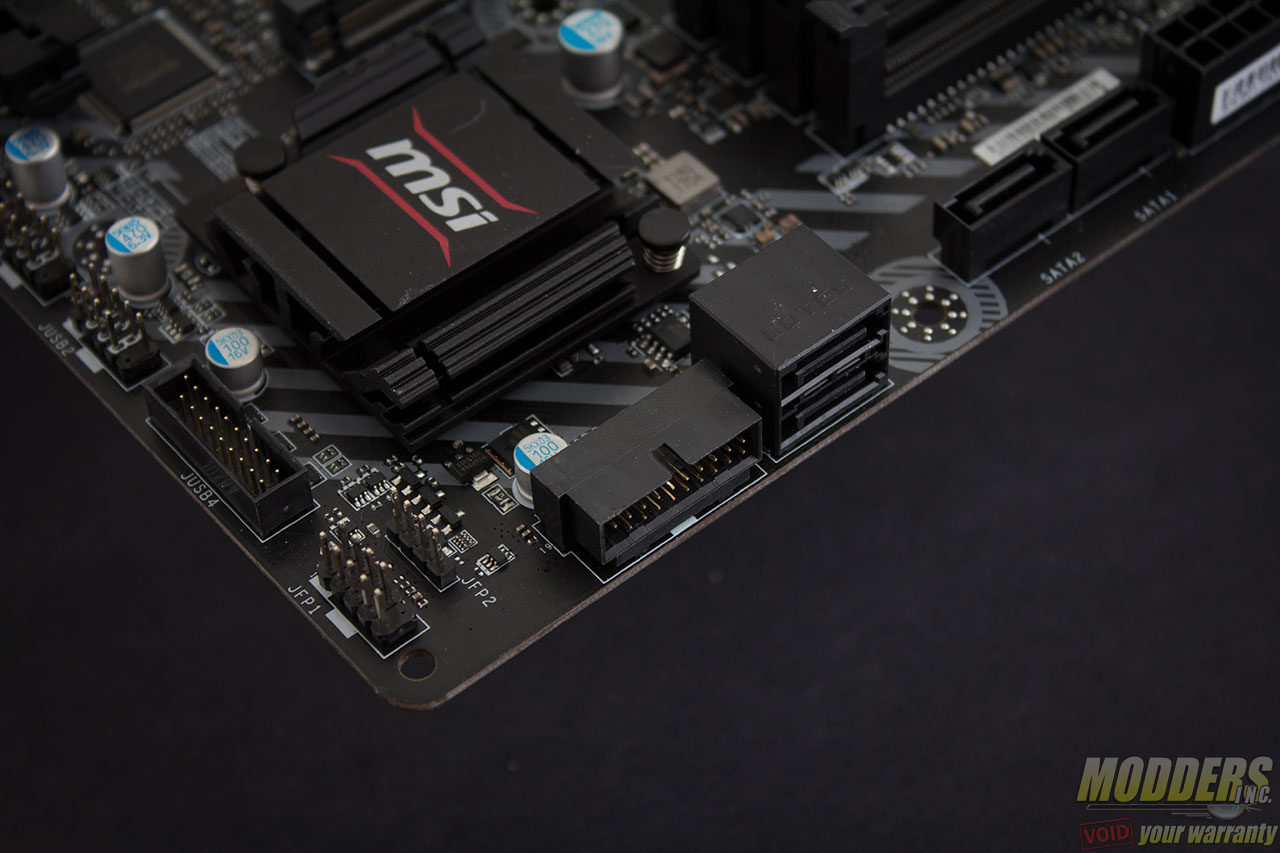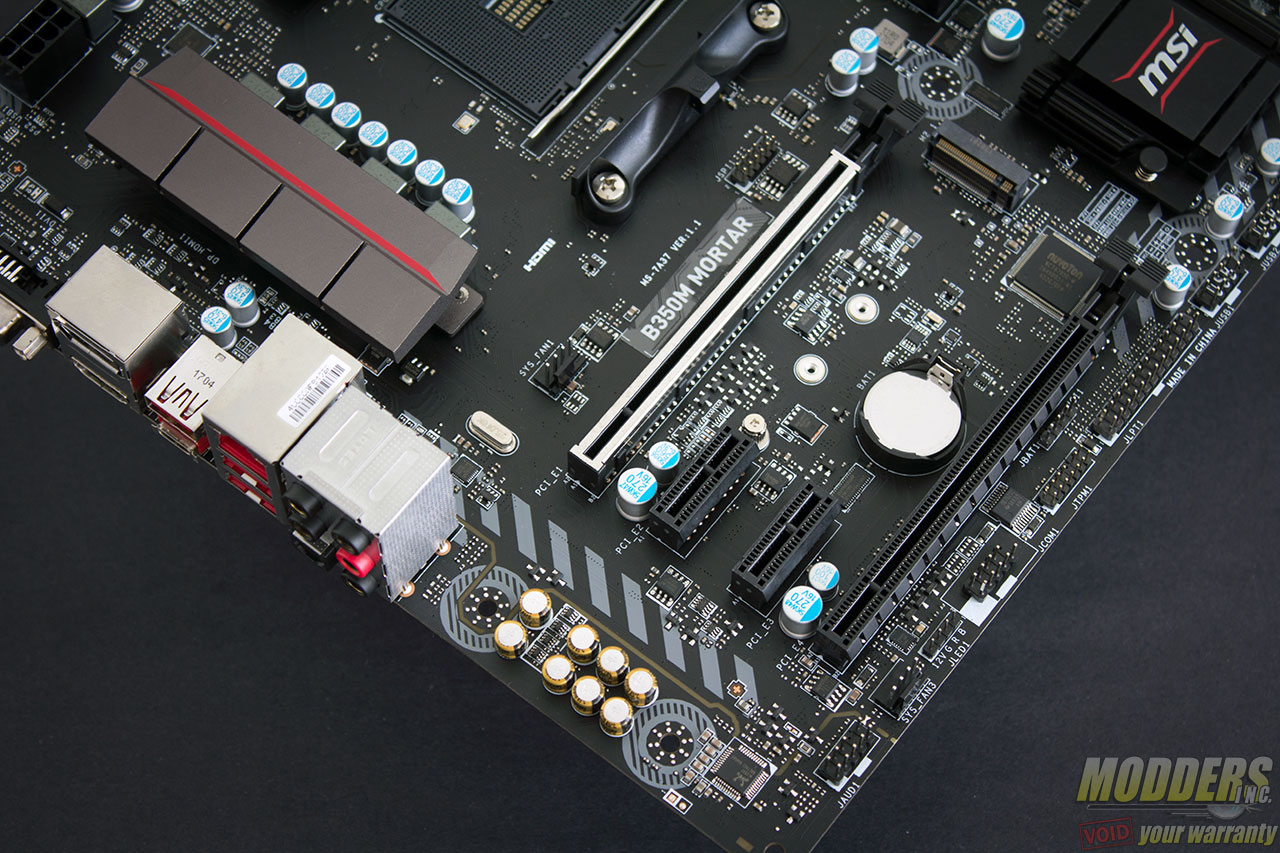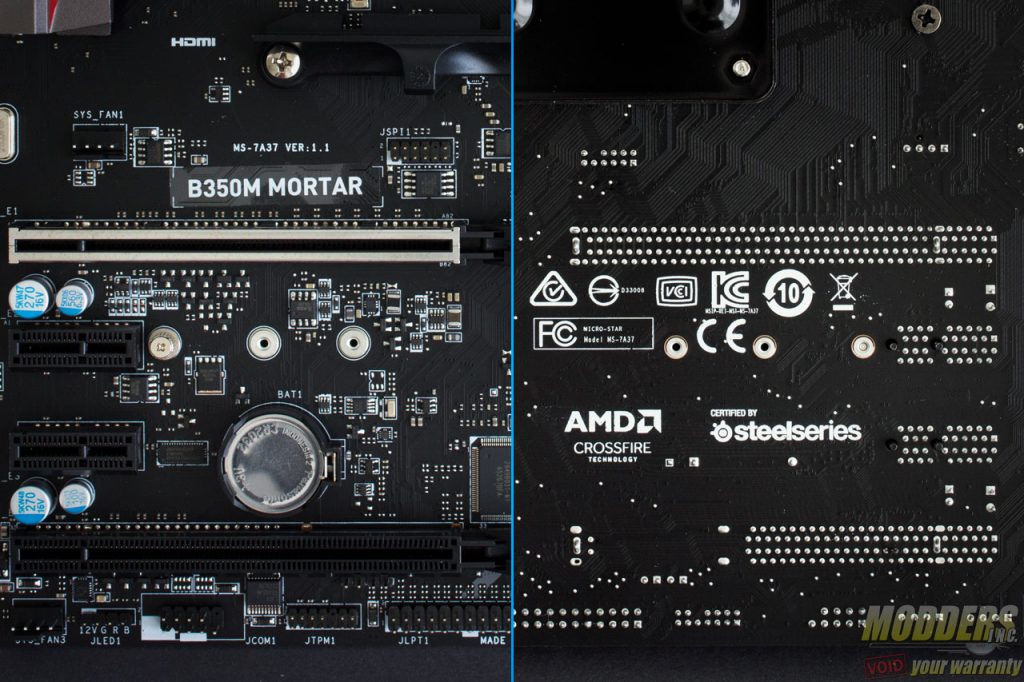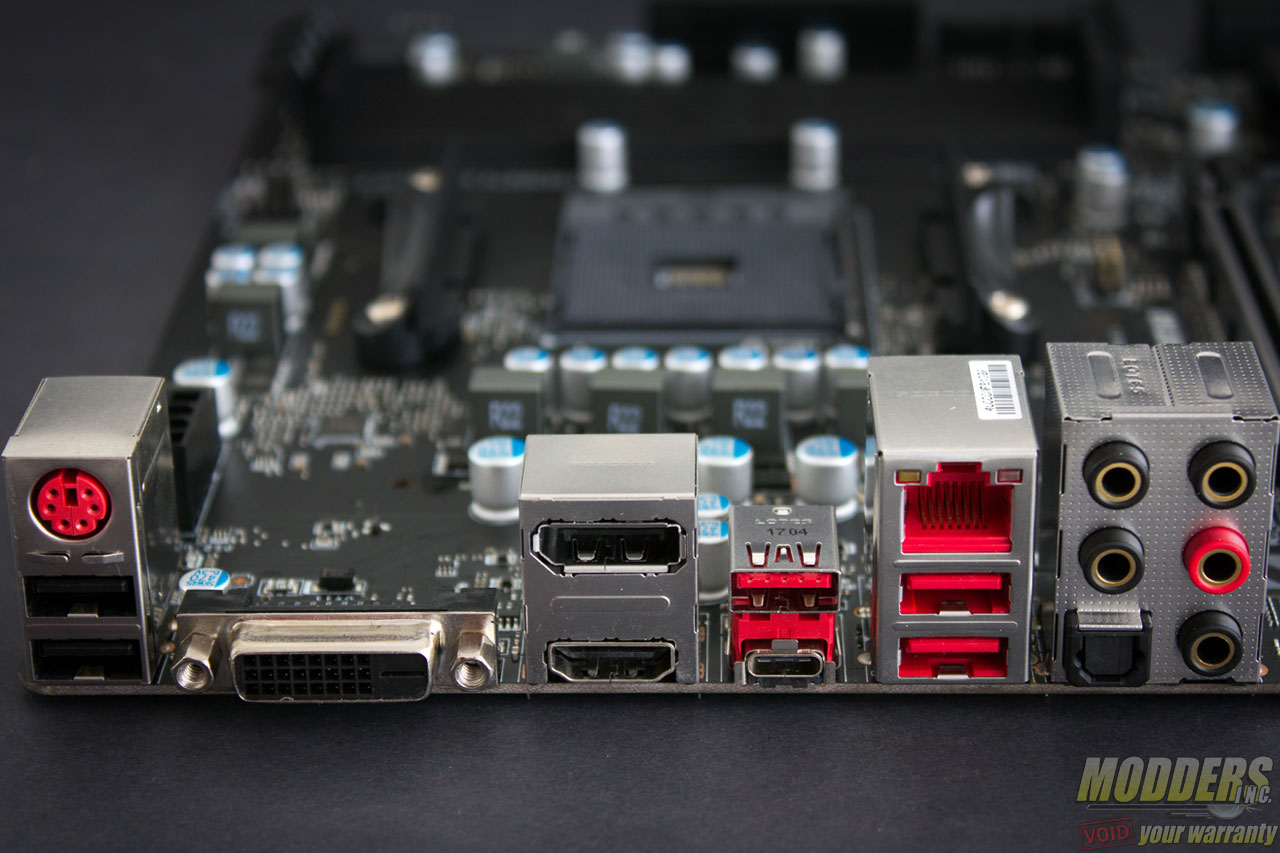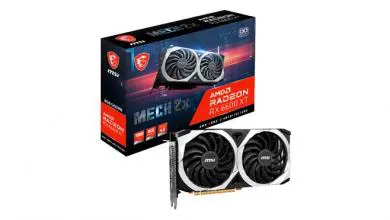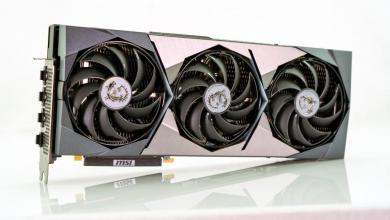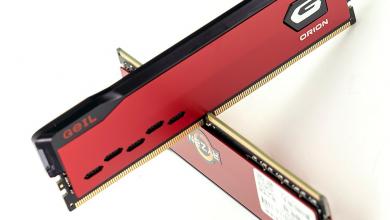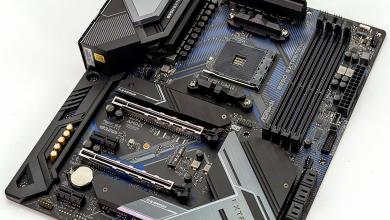MSI B350M Mortar AM4 Motherboard Review
A Closer Look at the MSI B350M Mortar Motherboard
Clearance and Heatsinks
VRM Overview
The 8-pin CPU power is located on the top left corner right above the VRM heatsinks The Richtek RT8894A CPU PWM controller is also located here. This Richtek RT8894A is a SVI2 dual-channel PWM controller that can be configured for up to 4-phases on one rail (with three integrated drivers) and up to 2-phases on another. Both use extra Richtek RT9624F drivers for 4+2 phase CPU and SoC to drive a pair of NIKO Semi PK632BA MOSFETs with one PK616BA MOSFETs per phase x4 for the CPU plus a pair of PK616BA MOSFETs with a pair of PK632BA MOSFETs per phase for the SoC.
There are no clockgen for BCLK adjustment, since those are for high-end X370 boards. Only the CPU MOSFETs have a heatsink. The SoC area is bare and there are also no mounting holes available to mount a heatsink. It is not necessary for regular use or even overclocked as Ryzen performance cannot be pushed that way.
Similarly, a single-phase Richtek 8125E with a pair of NIKO Semi PK616BA and a pair of PK632BA MOSFETs are also used for the memory VRM. The DIMM slots only lock at the top, and a maximum 64GB capacity is supported across all four DIMMs. As of BIOS version 1.40 (pre-AGESA 1.0.0.6), the memory divider in the UEFI goes up to 3200MHz.
Fan Control Options
Storage Options
Storage options begin with the a pair of SATA3 ports right underneath the 24-pin power connector. Both of these face upward while two more stacked on top of each other below it are angled at 90 degrees. These ports are natively from the B350 chipset.
An M.2 slot is available right between the topmost PCIe 3.0 x16 slot and PCIe x4 slot. This is a Key M slot that supports devices up to 80mm long (2280 form factor), which is the typical motherboard support available. Although support for a 110mm long M.2 would be welcome just for full compatibility’s sake. The great thing about AMD’s design is that unlike Intel’s B250 chipset, the M.2 slot is not shared with any other feature. So users can populate the SATA ports while an M.2 PCIe x4 NVMe drive is installed and it would work.
On-board Headers
Aside from the SATA ports, there are two 19-pin USB 3.1 Gen 1 headers available for up to four ports. One of these is located right below the SATA port and is angled while the other is located below the chipset heatsink. There are also two more 9-pin USB 2.0 headers available for up to four ports. There is also a legacy LPT1 header and a COM port The Trusted Platform module header is located between them.
Above the TPM and the LPT headers is the JBAT and JC11 headers. The JBAT header is used to clear the CMOS battery, so users can short this port for 5 seconds while the system is shutdown and unplug in order to reset settings to factory defaults in case of a bad overclock or bad setting preventing POST.
The front panel headers are separated into two groups. One four-pin for the debug speaker (JFP2) and a 9-pin set (JFP1) for the HDD LED, power LED, power on/off and reset switches from the case. The pinout legend with polarity for headers are located on the opposite side of the chipset heatsink.
Continuing along at the bottom left edge is the RGB header. This header is limited to seven color preset options provided by MSI via their Gaming App desktop software.
PCIe Lane Distribution
PCIe Lane Distribution is as follows from top to bottom (physical: electrical):
- PCIe 3.0 x16 via CPU with steel armor reinforcement
- PCIe 2.0 x1 via B350
- PCIe 2.0 x1 via B350
- Physical PCIe x16 slot, wired as PCIe 2.0 x4 via B350
Audio Subsystem and Rear IO
As with most mainstream and high-end motherboards these days, the audio sub-system is physically isolated from the rest of the system. Red LEDs backlit the trace path. For the embedded audio solution, a Realtek ALC892 HD audio codec is paired with Japanese Nippon Chemicon audio capacitors. Although not as commonly used as the Realtek ALC1150, the ALC892 is a decent solution for a budget board. All of the other DACs on an ALC1150 have a 96dB SNR while the ALC892 have a 95dB SNR (A-weighting). Only the front DACs of the ALC1150 are actually 115dB SNR. Five analog gold-plated audio jacks are available at the rear for up to 7.1 audio configurations. An optical port is also available.
All the USB 3.1 Gen1 ports on the rear IO come from the AMD CPU, with one of the port using a Type-C reversible port (via an ASMedia ASM1543) instead of a typical Type-A. Two more USB 2.0 ports are provided from the B350 chipset, while the PS/2 port is from the Nuvoton NV6795 SuperIO. A legacy PS/2 port is for polling-free interrupt-driven input. Some gaming keyboards for example that are limited to 6KRO via USB 2.0 have NKRO capability when used with a PS/2 adapter.
For use with the integrated AMD graphics when an APU is installed, an HDMI port, a DVI-D port and a DisplayPort is available. The DVI-D port supports displays up to 1920 x 1200 @ 60Hz while the DisplayPort supports a maximum 4096×2160 @ 60Hz. The HDMI port supports a maximum resolution of 4096 x 2160 @ 24Hz. A Realtek 8111H Gigabit LAN controller used for the network connectivity.
